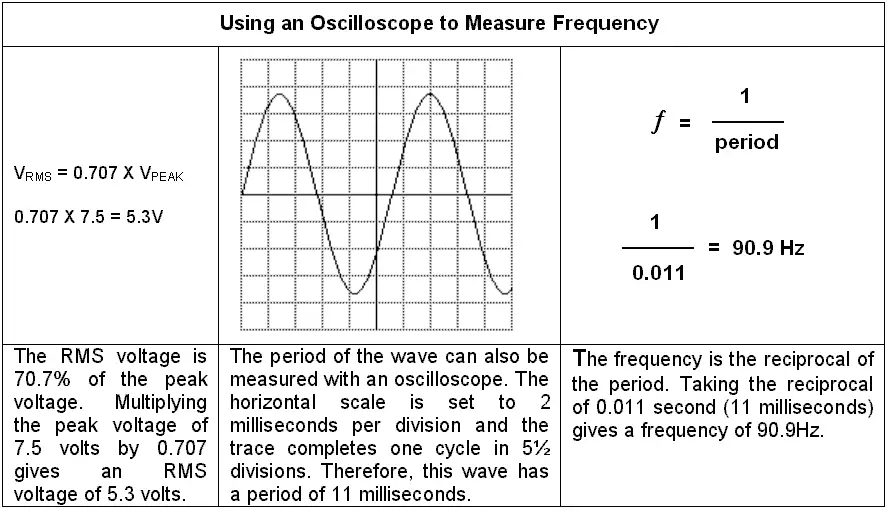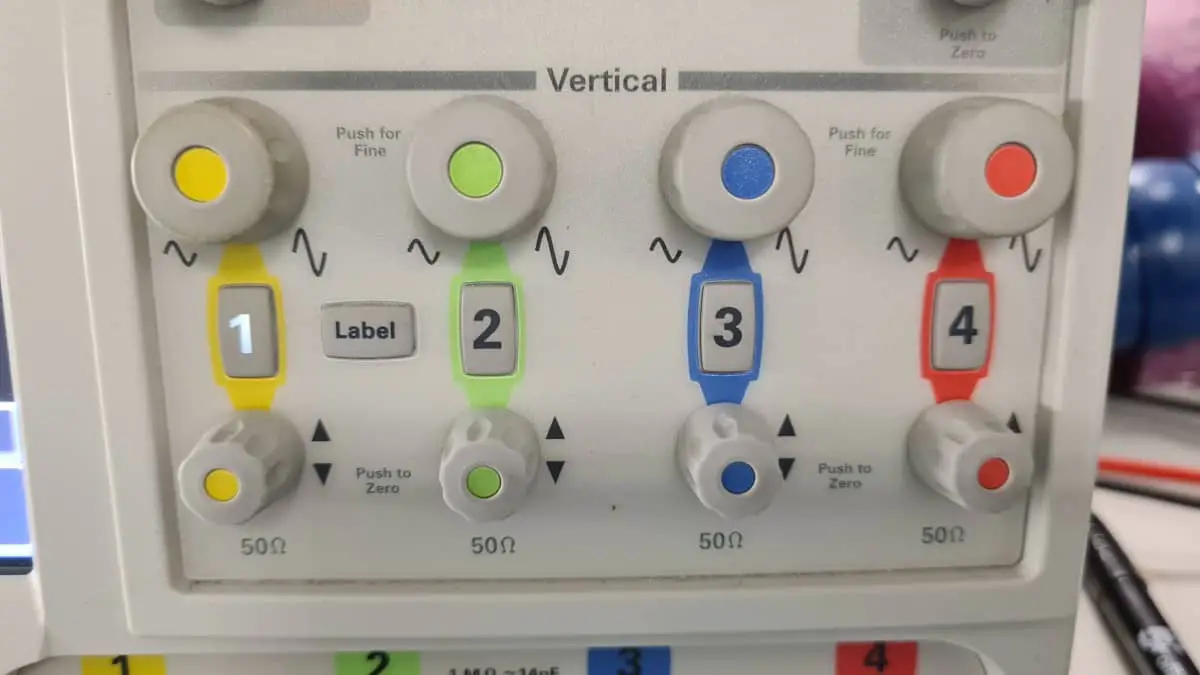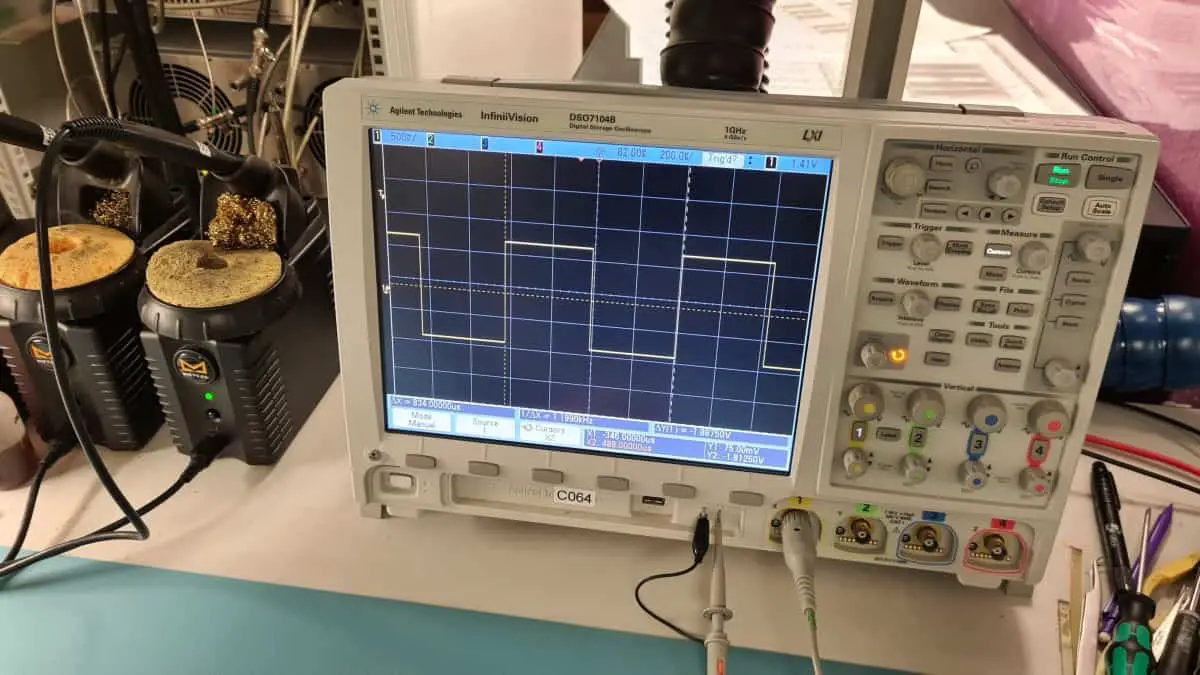Oscilloscopes are primarily set up to measure the voltage of an electrical signal, which is then graphically represented by waveforms. However, scopes can be used to take measurements for a number of different applications – one of which is frequency. But how does an oscilloscope measure frequency, exactly? Well, there’s a straightforward answer, and then there’s a slightly more complicated answer.
On most, if not all, modern digital oscilloscopes the calculation is done for you, so you’ll be able to get a frequency reading whilst you’re measuring voltage. Simply press a couple of buttons to see the frequency of the signal you’re trying to inspect, as well as other statistics such as standard deviation and the mean frequency. However, there are ways to work out the frequency without the aid of technology.
How to Calculate Frequency
You can measure time and frequency quite easily using the horizontal scale on your oscilloscope. If you want to ensure accuracy when taking a frequency measurement, it helps to increase the signal area on your oscilloscope display – making it bigger so you can more easily translate the waveform.
Firstly, you need to measure the time using the horizontal scale on your oscilloscope, as well as counting the number of horizontal divisions from one end of the wave to the other where it crosses the Centre Horizontal Graticule Line. Then you can multiply the number of horizontal divisions by the time/division to find the signal’s period. Once you have this, you can perform the frequency calculation: one divided by the period. Mathematically this can be represented as frequency=1/period.
Automatic Measurements on a Digital Scope
As previously mentioned, most high-quality digital oscilloscopes will take measurements automatically, meaning that you don’t have to do the calculations. On Tektronix oscilloscopes, you can find the time measurements under the ‘measurements’ badge on the display. This will give you an accurate, live reading of the frequency, which will change depending on the signal being transmitted.
You can also access all statistic data. This way you can see the standard deviation, mean, maximum, and minimum of the frequency, providing a better idea of how the signal is reacting.





